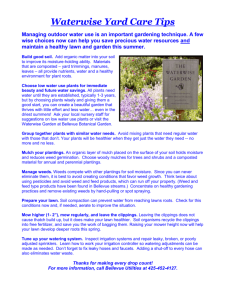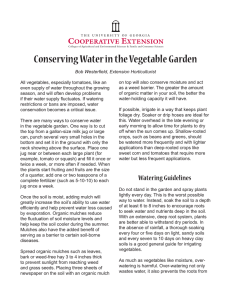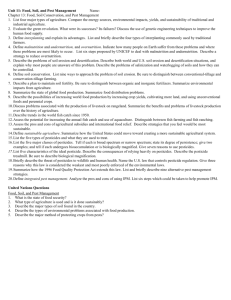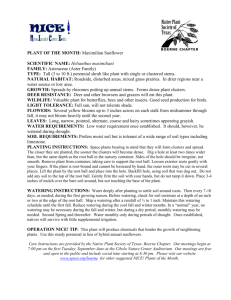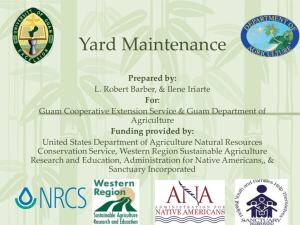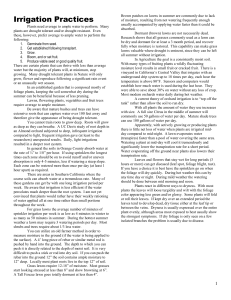organic - ecoLogical Lawn & Tree Care
advertisement
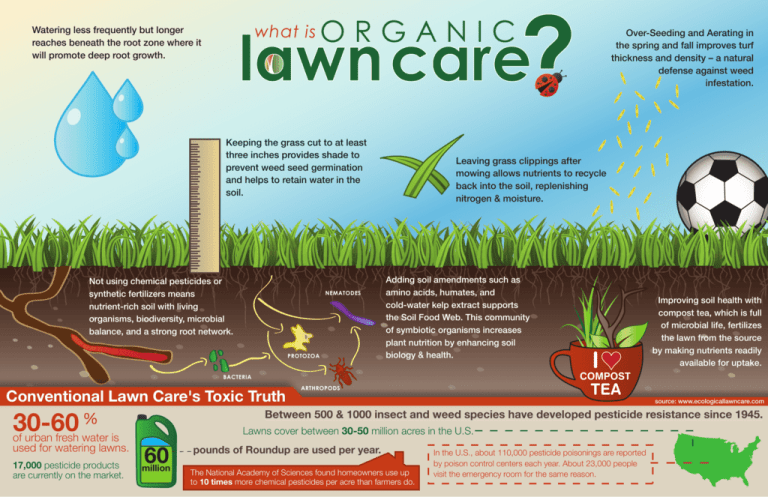
ORGANIC lawn care what is Watering less frequently but longer reaches beneath the root zone where it will promote deep root growth. Keeping the grass cut to at least three inches provides shade to prevent weed seed germination and helps to retain water in the soil. Not using chemical pesticides or synthetic fertilizers means nutrient-rich soil with living organisms, biodiversity, microbial balance, and a strong root network. NEMATODES PROTOZOA Over-Seeding and Aerating in the spring and fall improves turf thickness and density – a natural defense against weed infestation. Leaving grass clippings after mowing allows nutrients to recycle back into the soil, replenishing nitrogen & moisture. Adding soil amendments such as amino acids, humates, and cold-water kelp extract supports the Soil Food Web. This community of symbiotic organisms increases plant nutrition by enhancing soil biology & health. I COMPOST BACTERIA Improving soil health with compost tea, which is full of microbial life, fertilizes the lawn from the source by making nutrients readily available for uptake. TEA Conventional Lawn Care's Toxic Truth source: www.ecologicallawncare.com Between 500 & 1000 insect and weed species have developed pesticide resistance since 1945. % ARTHROPODS 30-60 of urban fresh water is used for watering lawns. 17,000 pesticide products are currently on the market. Lawns cover between 30-50 million acres in the U.S. 60 million pounds of Roundup are used per year. The National Academy of Sciences found homeowners use up to 10 times more chemical pesticides per acre than farmers do. In the U.S., about 110,000 pesticide poisonings are reported by poison control centers each year. About 23,000 people visit the emergency room for the same reason.

